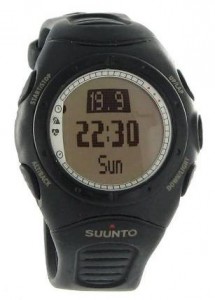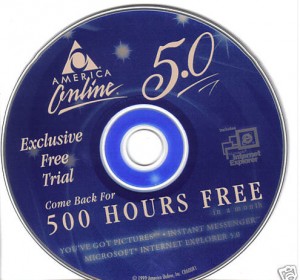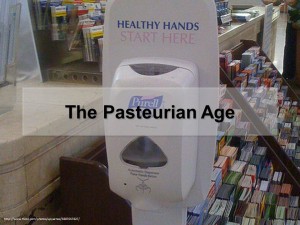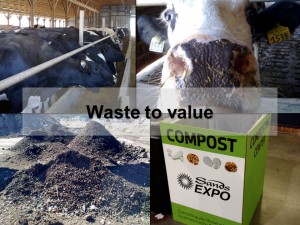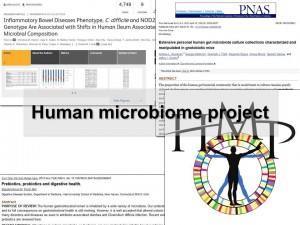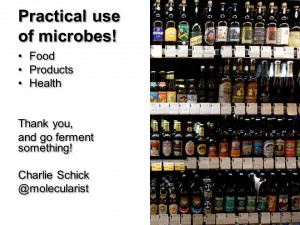 There is but one Night, a Night that lives in Earth’s shadow, a Night that covers half the Globe, sliding gradually West in a never-ending run from the Day. Though we are said to be day creatures, descending at dawn from the safety of our trees to hunt and gather, our time, the time when we hunt and gather in a different way, when we no longer hunt and gather for food, shelter, protection, when we hunt for friends, companions, when we gather together for play, song, love, our time when the day creature is put away in a little box and out comes the social creature we really are, our time is the Night.
There is but one Night, a Night that lives in Earth’s shadow, a Night that covers half the Globe, sliding gradually West in a never-ending run from the Day. Though we are said to be day creatures, descending at dawn from the safety of our trees to hunt and gather, our time, the time when we hunt and gather in a different way, when we no longer hunt and gather for food, shelter, protection, when we hunt for friends, companions, when we gather together for play, song, love, our time when the day creature is put away in a little box and out comes the social creature we really are, our time is the Night.
Our Night has evolved as our life has, becoming richer as more effective ways to mix and match and connect and enjoy have been invented. Granted, every generation thinks they live in the Golden Age, the height of their civilization. And, granted, later generations dwarf previous Enlightenments. Yet, the Dark Ages these are not, the inevitable trumping of our Age by some future Age in no way diminishes the Wonderment of our Hyperconnective Age.
And Life wants to be connected, it wants to build layers upon layers upon layers of connectivity, and the last century has heaped more layers of hyperconnectivity via transport and communication. The narrative we seek here tonight is that narrative of hyperconnectedness, of personal mobile communications, of mind-to-mind connections, of one-handed, background, interruptive, back-pocket, individual, essential, ubiquitous, untethered freedom.
The facts in this narrative are not as important as the participants, the ones who have integrated into the Mobile Lifestyle, the ones who know no other way to communicate, the ones from every walk of life who are united by a piece of metal and plastic.
All of them are here tonight, all 2-plus billion of them, all being watched by the next billion, who live mostly in emerging countries aspiring to enter the real net of humanity, the real net of connectivity, the net that keeps growing and will soon encompass everyone able to think, to feel, to share.
Night arbitrarily starts in the Pacific, not far from Auckland, where we pick a thread of this mobile narrative on a mid-winter Friday, early evening, where a young man pauses before heading out the door, empty-handed, with only keys and wallet. In a momentary panic, he turns to look for the object to fill that emptiness, the object that is present even when missing, the object he would more readily report missing than a lost wallet or lost keys.
Night moves on and covers a group of Tokyo teenagers, dressed up in their favorite get-up, a get-up borrowed from movies, manga, magic, a get-up that both removes and enhances their identity through a common language easily read, as easily read from their overloaded keitai straps, the ringtones, the sub-culture in sub-cultures of their text message codes.
Prognosticators watch these teenagers, guestimating the future of the Mobile Life- style effortlessly exemplified by the Tokyo Lifestyle these teenagers don’t consider special, but integral to whom they are. Are their phones their wallets and keys, too, as waving becomes a way to exchange info, connect, pay for stuff, open doors? Will the world be tagged with invisible radio and cryptic 2D tags as a physical to virtual connection, as a way to access more info than could be pasted on a wall, as a way to bring static objects to life, as a way to hide a whole new world under the noses of the adults?
A night in Tokyo will teach you much about the far future, the future made real by only a few million, compared to the almost 2 billion who don’t have or can’t afford the gadgetry to live the Tokyo Lifestyle, who need to be or are content with a gadget that fits their budget, their lifestyle, their culture, their language. The real thriller in Manila is the combined millions of pairs of thumbs that text message in huge numbers, using their thumbs to communicate, using their thumbs for social activism, using their thumbs to organize for democracy, for communism, for Islam, for rebellion, for freedom of expression. One hundred and sixty characters unleashed in a way as in no other country. One hundred and sixty accidental characters, built with a clear goal that no one ended up accepting. One hundred and sixty characters that The People hacked, that The People took as their own, that The People used to show that “we are not passive consumers, we are active participants in our lives”.
No matter what you foist on your “consumers”, you cannot control what they do, so wake up and smell the text message and be open to the creativity and inventiveness of those you provide service to, provide the loam and let them do the gardening, not because you are dumb, but you would never have made millions of Filipinos pound happily and obsessively on their phones, and pay you for it, if you had tried to plan it.
Impressed as we are with billions of text messages a day, we still have no idea as to the scale of things. Take the most populous country, with Mumbai as one of the largest metro areas in the world, and text message is just play as Mumbai youngsters actively chat via their phone browser, winksters all, discovering the power of the Web for the first time via their mobile. With most of the next billion phone users coming from emerging markets, with most of the next billion never having a PC or access to the Web, what will we unleash as they join the throngs of texters, of winksters, of people empowered by the simple joy of text, the joy of voice, the joy of a personal communication companion?
Just look at Hong Kong, where the Night is always hot in midsummer, hot with flashy cars, flashy jewelry, flashy neon signs, flashy high-end phones with all the latest software, all the latest features, all the latest accoutrements that drive high-end use. Whip out the phone at a bar for karaoke, or just look up lyrics on the Web, or sniff for other Bluetooth devices to meet friends, to get laid, to pull a prank, or snap-upload-share in that vicious cycle aided and abetted by a camera phone with flash and finesse.
A far cry from Accra, old city in a young country with even younger people, some of whom can only dream of owning their own wireless tie to the rest of modern humanity, who don’t know if they are ashamed or empowered when approaching these two men in wheelchairs, two men who have spent so much time trying to make a living only to strike pay-dirt by becoming telephone dudes who rent out seconds or minutes or messages of connectivity for those in the eternal waiting line for their own phone. Make your call with ease, let them remember the number for you, even if you are not illiterate, these men are the new phone booth, the new entrepreneurs, the new phone company, the new future of communication. If they are lucky, they might land a micro-loan, a phone, and an antenna, and set up their own provider for a village, for a region, for a people to leap forth into the modern world without the baggage of the 20th century.
Yet, this is not a worry for the birds who flew for a fling in the Canarias, from Finland, where all old enough to write their own number, not the social security number from the government, but the social secureness number that comes with a SIM card, a subsidized 3G handset, a megapixel camera, a Nordic lifestyle, and those little umbrellas in their drinks. Ever free but never far, these Finns enjoy a midsummer of a different sort, on a faraway island, but connected to home islands and lakes via midnight photo messages of bonfires and celebrations back home.
In contrast to Lutheran restraint loosened by midsummer cheer, the hot and sweaty mid-winter of Rio de Janeiro only further enhances the exhibitionism and innocent egotism of snap-happy mobilistas who party early into the morning, their photo trail uploaded on the go for all to see and endlessly comment on through social networking sites. Contradicting reasonable assumptions, the Cariocas snap and share as if there were no tomorrow, no shame, no repercussions, no end to the joys of sharing by voice, by photo, by Web, by mobile.
Flipping assumptions of a poor country of exhibitionists to a rich country exhibiting restraint in mobile phone use, we see Night becoming mobile as rich and educated Boston evolves from voice-only to discovering the power of the silence of text, the power of an empty message saying volumes, the power of a semi-colon, dash, and closing parenthesis to make someone feel warm, the power of a “yes” in making a young man’s knees shake, the power of a few text messages to coordinate a group faster than a chain of calls, the power that the mobile-savvy have always known, the power that is inherent in all phones, the power that is as basic to modern mobility as is voice.
Yes, the Boston night has become quieter since phones became extensions of thumbs, since voices no longer need to be heard over the sound of the band, since an inoffensive beep or buzz is enough to say, “Uh, excuse me, you have a message, please pull me out of your pocket when you can, it’s just for a moment, then you can just slip me back into your pocket until the next time I chirrup and politely call for your attention”.
But not all want a modest phone, as in Los Angeles, hot and bothered by the mid-summer heat, glitterati parade for their adulators, consort in one hand, mobile phone of the millisecond in the other, thin or flip or color, with no requirement of functionality, usability, longevity. For the jet-set, it’s not about what it does, but how it looks, how it matches the other accessories, because, really, who makes their own calls?
As the afterglow of the sparkle and tinsel fade from our sight, we espy at last the dark underbelly of the mobile world, dark enough to upturn the Mobile Lifestyle, to keep it from growing, to make the bleeding edge coagulate to a stand still, and, for no particular reason except that our Night is ending, we find evidence for this in Honolulu, near the end-point of our Night. There, our night revelers reach for inexpensive landlines to coordinate a gathering, or upload their digital camera photos from their all-you-consume, super-sized broadband PC in the wee hours before dawn, before going to sleep, before the evening joys are forgotten.
Nor do the revelers give out their mobile phone numbers because they need to pay for incoming calls and messages, or open up their browsers to check anything, not because it’s expensive, but because they can’t figure out what plan they’re on, how many minutes they have, how much 1 kilobit is and how much it costs, when the free minutes end or start, why it costs me to get my photos off my phone, why do you charge and disable, why is the real cost of using all those fancy services you are touting never revealed, why is cost the dark underbelly of mobile services?
Oh, it is now Saturday evening in Auckland, a full turn taken, as has been taken for billions of years, different turns for different folks in our narrative, different ways mobiles have impacted their lives, different ways mobiles have progressed and integrated into our existing networks, our existence, our culture, our habits. And it’s only been a decade or two since the mobile phone boom began. How will we continue shepherding all these different threads of the narrative, nurturing each individual evolution, letting a thousand flowers bloom? That’s our narrative for another night.
No longer feeling abandoned, anxious, or lonely, but reassured, loved, and now secure, our young man has remembered his phone this time, placed it in his hand, rolling it slowly in an unconscious gesture mobile phone owners have, fingering it, caressing it, twirling it, checking it, touching it, treasuring it, fondling it in a self-pleasurable sort of way only something that is part of our body deserves.
Indeed, the mobile phone has become more personal than any other tool we have ever created, every Night revealing its true position in our lives, its true impact on our behaviors, its true importance in how we as a collection of cultures, we as a global society, we as a species, have just evolved to a new layer of connection.
Background
This was written, by invitation, for Vodafone’s receiver magazine in August 2006. I noticed today the original article had finally disappeared from the web (like other great mobile sites, such as The Feature), but I had a copy and decided to post it once more.
I was excited to be invited to publish in receiver. Lots of cool mobile folks from that era were invited to write for receiver. If I recall correctly, @moleitau also wrote for this issue, though he was @blackbeltjones still at the time, I believe.
The issue was #16 “Connecting to the Future”. The publishers even had someone narrate my story. It was cool to hear a BBC-ish British man read my writing. Thanks to the Wayback Machine, I was able to find a snapshot (go click on the animation a few times) with the recording (I was briefly saddened that I could not find a copy of my own).
Of course, this story was interesting to re-read today. It was written before the iPhone indisputably altered the fate of all mobilistas; though Nokia’s Cloud project (aka Ovi) was already forming in my head. And, at the time, I was mulling a longer book on the mobile lifestyle, of which this is a hyper-concentrated version of what I intended (and, finally getting it all out in this format, sucked out all the desire to finally write that book)
And why the narrative format? When the publisher contacted me, it was for a basic scholarly article type of thing on the topic of ‘night out’. But then she had mentioned she had read and liked “chillin’“, so I offered to actually write the article in that style. I was pleased she like the idea and, lo, the story above was born.
Wow. A trip down memory lane.
Here was the intro receiver wrote for the story:
Charlie Schick currently provides internet strategy consulting to various projects within Nokia. His checkered past includes numerous articles and stories for online and print publications, deep scientific research, a book (co-authored), mobile multimedia products, and some unpublished fiction hidden in his closet. He has recently fooled himself into writing another book, due to be unpublished sometime in the far future. In his contribution to receiver, Schick weaves a global story of one night in the mobile life.
http://cognections.typepad.com/lifeblog/ Charlie Schick’s blog
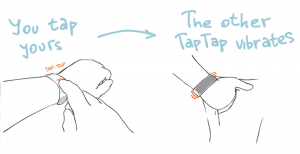 Christine Lemke posted a collection of links to wrist gadgets, which triggered a conversation between us on Twitter.
Christine Lemke posted a collection of links to wrist gadgets, which triggered a conversation between us on Twitter. Disclaimer: My family has a long history living in, speaking out against, and escaping trouble from totalitarian governments. So, please understand that I have a terrible allergy towards anything that smacks of police-state bullshit.
Disclaimer: My family has a long history living in, speaking out against, and escaping trouble from totalitarian governments. So, please understand that I have a terrible allergy towards anything that smacks of police-state bullshit.




